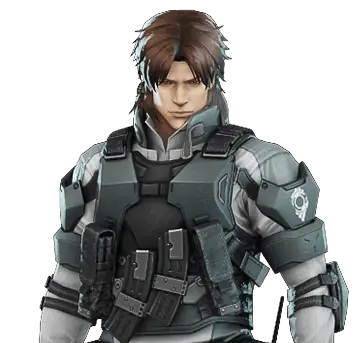Tens of thousands of Tesla owners have had the suspension or steering of their vehicles — even in practically brand new ones — fail in recent years. Newly obtained documents show how Tesla engineers internally called these incidents “flaws” and “failures.”
Nonetheless, some of the documents suggest technicians were told to tell consumers that these failures weren’t due to faulty parts, but the result of drivers “abusing” their vehicles, which highlights the EV maker and its CEO Elon Musk’s infamous way of handling customer complaints.
You mean the front fell off? Damn, Elon should move into ship building…
spoiler
asdfasdfsadfasfasdf
The ones that are safe
I knew I wouldn’t have to scroll down too far to find this comment. Thank you.
It was towed outside the environment.
Into another environment?
Frankly, I think we should take this kind of stuff as a moment to consider where we could rebuild public infrastructure to prevent people having to own cars in the first place.
Have they tried dragging the Teslas out of the environment?
Into another environment?
“a Minor Issue”
I divested from Tesla years ago.
I still feel great about it.
Mhm, knows more about manufacturing than anyone alive on Earth.
I guess it’ll be fun/sad to watch StarShip 3 either detonate on the launch pad or before it passes the Karman Line.
Rockets are harder than cars, so hopefully this means Elon is too stupid to contribute anything but haughty goals while the actual engineers make sure we don’t blow up any astronauts.
He did ask them to make the rocket pointy so it looks like the rocket in Sacha Baron Cohen’s “The Dictator”.
And they complied.
detonate
The term is “R.U.D.” - Rapid Unscheduled Disassembly.
Detonate is actually more precise, implying an explosion that accelerates at or faster than the speed of sound, often causing a visible blast wave in air that is humid and dense enough as the pressure wave compresses the air and squeezes it into visible semi cloud like formations momentarily.
RUD is a general term that can cover any number of events which cause a craft to generally lose structural integrity in a small amount of time.
For example, a craft could hit max q either at a non optimal angle, or due to structural integrity flaws, more or less violently tear itself apart.
Or, a craft could enter the atmosphere at a non optimal angle, or at too extreme a velocity, and be ripped apart, again, violently and quickly. This is generally referred to as ‘Burning Up’.
Or a craft could have a parachute or landing system related problem and impact the ground at such speeds it disassembles itself. Jokingly referred to as ‘lithobraking’.
Or, a craft could have an accidental triggering of some kind of abort system that results in the craft tearing itself apart.
Or, at any point while airborne, a problem with either the integrity of a fuel tank or the fuel pumps and plumbing could cause a rupture, which could then cause the craft to crumple, deform, and then rip itself apart /without/ the loose fuel igniting, or perhaps /with/ the loose fuel igniting, which may merely conflagrate or detonate depending on other factors.
While many of these more specific chains of events have more specific terms to describe them… they are /all/ Rapid Unplanned Disassemblies.
All that that term means is for some reason your craft went from being more or less one piece to more or less a large number of pieces very quickly.
For example the Challenger disaster was a RUD. But not a detonation. Detonation is more specific and I used the term for a reason.
Do they really call a spacecraft airborne?
Starship’s ITF-2 launch already got well above the Karman line.
Well, the booster exploded below the Karman line (EDIT: Yep, 90km max alt. and detonation, Karman line is 100km), and the orbiter blew up or tore itself apart above the Karman line.
And no, the orbiter did not self destruct as part of some kind of intentional action or design by SpaceX.
It was seen on camera disintegrating before SpaceX even realized they had lost contact with it.
They probably did not engage a self destruct system on the orbiter while they were still claiming it was at a nominal trajectory when they hadnt even realized it had already disintegrated, taking multiple minutes to even realize they’d lost contact with it as pieces of it were already burning and tumbling in the upper atmosphere.
My prediction for 3 is that again at least part of the craft will blow up below the Karman line.
The full static test fires they recently did damaged the craft because the test stand wasn’t designed for that the amount of force, nor for the duration they’re currently testing with it, and because for some baffling reason they are not using a flame trench or proper diversion channels.
My guess is that, combined with the defects and flaws seen from the first two launches, these full power static fire tests will have damaged the craft more than they are able to repair properly in time to follow Musk’s recklessly fast launch timetable, and the whole thing will blow up or have significant trajectory problems from multiple non catastrophic engine failures before the hot staging, and/or when the booster tries to do the belly flop maneuver, the fuel tank(s) or lines will rupture as happened last time, and if the abort system engages properly it’ll then basically fall to the ground, or if it doesn’t, it’ll detonate spectacularly in midair again.
The booster was never intended to go above the Karman line. Calling that a “failure” is ludicrous.
Also, the orbiter was destroyed by its flight termination package triggering, which is the very definition of an intentional action. The reason it triggered was apparently an oxygen leak that led to the upper stage running out of oxidizer just a few seconds short of achieving orbit, which wasn’t according to the flight plan, but this was a test flight so the plan was always “see what happens and fix whatever problems come to light” so that’s still not exactly a failure. They got farther than they did on IFT-1.
You are perhaps more used to the NASA way of “testing”, which is to exhaustively perfect the rocket before it ever launches and then expect everything to go smoothly during a single shakedown flight before payloads start going up with flight #2. That’s not how SpaceX does things.
My prediction for 3 is that again at least part of the craft will blow up below the Karman line.
Given that the booster is never going to cross the Karman line (booster separation happens at 64km), and that the intention is to deliberately ditch the booster in the ocean rather than recover it, you’ve got quite a conservative prediction there. I honestly can’t think of any possible way that this wouldn’t happen.
“Front wheel fell off” could mean a bunch of different things here. If the wheel actually became wholly separated from the vehicle, at 15,000 miles, that would most likely be due to incorrectly torqued lug nuts after a tire rotation. Those torque specs are important, and undertorqued lug nuts can work themselves loose, putting undue stresses on the lug bolts, which snap, and there you go. Such a situation would not be Tesla’s fault, rather the fault of whoever rotated the tires.
Or, “front wheel fell off” could mean something like a ball joint or tie rod end failure, which could cascade into a very unusual wheel position, easily described as “fell off,” while still being connected to the car by the strut mount. That kind of failure would be Tesla’s fault, and would align with the mentioned “collapsed suspensions.”
In any case, the car would make incredibly horrible noises and vibrations well before a catastrophic failure. These kinds of mechanical suspension parts do not go from “perfectly fine” to “completely failed” in the blink of an eye, even if they do fail far before they should. I’m not putting the blame for the failure on the driver of the car, but I have no problem blaming the driver for letting a situation like that get to the point of catastrophic failure on a brand new car.
Edit: @TheChurn - care to tell me what I said to deserve your downvote?
Jain is one of tens of thousands of Tesla owners who have experienced premature failures of suspension or steering parts, according to a Reuters review of thousands of Tesla documents. The chronic failures, many in relatively new vehicles, date back at least seven years and stretch across Tesla’s model lineup and across the globe, from China to the United States to Europe, according to the records and interviews with more than 20 customers and nine former Tesla managers or service technicians.
You got a downvote from me for making shit up about something other than the issues being reported.
I didn’t make up anything. I’m not saying Tesla doesn’t have some serious QC issues. Clearly they do.
What I’m saying is that “wheel fell off” and “suspension collapse” are not specific enough descriptions to know exactly what part(s) are failing prematurely or why or how one failure cascades into other damage. My descriptions above of potential failure scenarios are reasonably probable. I will also stand behind the notion that 115-mile guy had to have experienced horrible vibration, or scraping, or noise for at least several miles before “the vehicle’s front-right suspension … collapsed” – whatever that actually means.
You are still making things up by assuming every failure involves prior noises and symptoms.
Again, suspension components do not go from “working perfectly” to “catastrophically failed” without passing through an easily notable period of “oh shit, something is seriously wrong here, I should stop.” A light bulb can fail that way; when there is a functioning electrical circuit, the light works, and when the circuit is broken, it doesn’t. But we’re taking about suspension components. These are (even if they are shoddily manufactured) very beefy metal components. Even when strut mounts, ball joints, tie rod ends, control arm bushings, springs, axles, and wheel hubs fail, they become extremely loose long before the failure escalates to something which could be called “suspension collapse” or “wheel fell off.”
Is it entirely impossible for that to happen? The only scenario I can think of is if a front lower control arm snapped. Not the ball joint at one end of it, or the bushings at the other, but the actual control arm. It’s possible, but highly unlikely - especially at 115 miles, again even if the part was manufactured shoddily.
There’s a giant hole in the reporting here, to the point where the catastrophic failure events being reported only have a reasonable explanation if the driver ignored obvious warning signs.
This is clearly an indicator that Tesla doesn’t make their suspensions as beefy as they need to since it keeps happening.
Maybe you should read the articles instead of assuming there are holes in them based on your uninformed conjecture?
The article barely even mentions which Tesla model(s) are involved here, only noting one person’s Model X. So let’s go with a Model X. And since there’s been talk of a Tesla with 115 miles on it, we’ll go with 2021 and newer.
Steering knuckle and wheel hub/bearing The weak link in these parts is going to be the wheel studs and lug nuts. A failure here is going to happen there before anything else, and will likely be due to (as I said) improperly torqued lug nuts. If those (or the bolts that hold the hub in?) somehow fail, there’s going to be ample warning in the form of noise, vibration, etc., before the wheel becomes separated from the vehicle. Everything else here is extremely thick steel. Nothing about this design is inherently different from any other vehicle.
Front control arms The Model X apparently has one front upper control arm and two front lower control arms. These mount to the frame on the inside via bushings, and on the outside via ball joints. The existence of upper control arms means that the front suspension does not depend on the upper strut mount as a pivot point for the steering; that pivot point is the upper ball joint here. This also means that a failure of the strut mount would not result in a condition that could be described as “the wheel fell off.”
Of particular note about the lower control arms - I am used to seeing front lower control arms have the ball joints inserted from the bottom of the steering knuckle. This design has the ball joints inserted from the top side, and the nuts attached at the bottom. This is a safer design, since a loose nut would not cause the control arm to fall out of the knuckle. In any case, if a piece of hardware attaching these control arms failed, the wheel would not “fall off,” nor would the suspension “collapse.” It would be more difficult (though not impossible) to drive, there would be excessive noise and crazy vibration.
The weak points in the control arms themselves (for the purposes of our discussion) would be the ball joints. Ball joints simply do not fail suddenly and without warning. The joint can be extremely loose inside the part of the control arm which captures it and still leave the driver with enough control to safely steer the vehicle off the road (which a sensible driver would do, because it would be clear that something was horribly wrong).
The lower control arms pictured appear to be cast, while the uppers may be stamped, with welded on ends. Could one of those welds fail? As previously mentioned, yes, but it would be highly unlikely, and even if the weld at the single upper ball joint failed, it would not fail all at once. At the very least, the steering wheel would pull noticeably in one direction or the other, or the steering would be very “loose,” as the affected wheel would not be tracking normally.
I will reiterate here that this kind of failure would be highly unusual. Automobile suspension is not some crazy new-fangled thing; this type of suspension has been around for decades, and nothing being done in this design demands any kind of special skill to put together or manufacture.
Front air spring The top of this component bolts to the “shock tower,” and the bottom bolts to the rear lower control arm. No failure of this part would cause the “wheel to fall off,” and the only way it could be involed in “suspension collapse” is if the lower mounting bolt were to shear off at both ends simultaneously. Even then, the bottom yoke of the spring would remain captive around the lower control arm. It would be very bad, but you’d still be able to drive the vehicle safely off the roadway (while it made horrible noises and vibrations).
Steering Here we see the steering rack and the rack end joints. Something I find very interesting here is that Tesla … doesn’t sell the ends separately from the steering rack? This seems absolutely bonkers, since those joints are far more or a “wear item” than the steering rack itself.
But I digress. (cont’d next comment)
Those end joints (often called “tie rod ends,” since they were part of the “tie rod” before rack and pinion steering became popular) operate just lilke the ball joints do, except their job is turning the drive wheels via the steering wheel. Remember how I said that the lower ball joints were a good design, because they came in from the top? These end joints come in from the bottom. That’s not necessarily a “bad” design, but it does mean that if the nuts that hold them on are loose, they can drop out of the steering knuckle and cause the kind of failure we’re talking about. I also do not see a cotter pin in this image, which would contain the nut and prevent it from loosening all the way off the end joint.
However, as I have mentioned more than once, an assembly failure which undertorqued that nut would not happen “all of a sudden.” There would be - yes, again - ample warning to the driver that “oh shit, something is really wrong here” before the wheel became completely separated from the steering rack.
That’s really about it. I’ll mention again that none of this is “new technology.” These are the same kinds of suspension components which have existed in cars for decades. No failure which would result in
“suspension collapse” or “wheel fell off” could possibly occur without plenty of warning symptoms before either of those happened.Based on what I’ve seen through these diagrams, it seems that the most likely failure would be that last one, where the steering end joint becomes disconnected from the steering knuckle. It would still come with those warning signs, but by comparison to other possible failures, those signs would be the “least noticeable” (still very noticeable, just less than for the control arms).
they also have a minor issue about bursting into flames
Hilarious headline
What if it is stinking inside?
Backlog it, low priority.
This just makes me chuckle.
I remember the first year the that Tesla’s weren’t ranked dead last on the JD Powers Initial Build Quality list the editor made a special note that it wasn’t because Tesla had gotten better just that Polestar was worse.














